
Spiders--especially jumping spiders, crab spiders and orb weavers--fascinate me. They've been around for 400 million years and are cunning, skillful predators. I don't relish them eating a honey bee in our pollinator garden, but everything has to eat. If I were in charge of their culinary habits, though, I'd point them in the general direction of a delicious stink bug or a scrumptious green bottle fly or a tasty lygus bug. And ask them, pretty please, to leave my honey bees alone.
Still, many people fear spiders. Arachnophobia is a common phobia, but there are five good reasons to like spiders, according to Jason Bond of the UC Davis Department of Entomology and Nematology.
The five good reasons to like spiders?
- Spiders consume 400-800 million tons of prey, mostly insects, each year. Humans consume somewhere around 400 million tons of meat and fish each year.
- Spider silk is one of the strongest naturally occurring materials. Spider silk is stronger than steel, stronger and more stretchy than Kevlar; a pencil thick strand of spider silk could be used to stop a Boeing 747 in flight.
- Some spiders are incredibly fast – able to run up to 70 body lengths per second (10X faster than Usain Bolt).
- Athough nearly all 47,000-plus spider species have venom used to kill their insect prey, very few actually have venom that is harmful to humans.
- Some spiders are really good parents –wolf spider moms carry their young on their backs until they are ready to strike out on their own; female trapdoor spiders keep their broods safe inside their burrows often longer than one year, and some female jumping spiders even nurse their spiderlings with a protein rich substance comparable to milk.
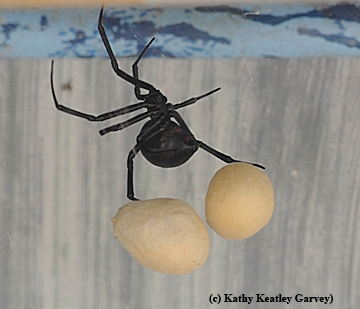
Following his presentation, activity stations will be open in the Bohart Museum where visitors can “Assemble an Arachnid,” “Create a Chelicerate,” “Cribellate vs. Ecribellate Silk,” “Catch a Moth,” “Eat Like a Spider,” and learn about "Spider Senses" and “Trapdoor Specifics.”
Visitors will see live specimens and specimens in alcohol. They'll learn the differences between woolly silk and sticky silk. They'll see the Bohart arachnids--tarantulas--and hold some of the non-arachnids, including walking sticks and Madagascar hissing cockroaches.
“Spiders are an incredibly diverse group with more than 50,000 species described with probably another 200,000 remaining to yet be discovered,” says Bond, who joined the department last July from Auburn University, Alabama. “They are quite ancient, with fossils dating back well over 300 million years and are known to be exclusively predatory.”
Bond joined the UC Davis faculty after a seven-year academic career at Auburn University, Ala. He served as professor of biology and chair of the Department of Biological Sciences from January 2016 to July 2018, and as curator of arachnids and myriapods (centipedes, millipedes, and related animals) at the Auburn University Museum of Natural History, from August 2011 to July 2018.
The Bohart Museum of Entomology, directed by Lynn Kimsey, professor of entomology at UC Davis, houses nearly eight million insect specimens collected from all over the world. It also includes a gift shop and a live “petting zoo,” comprised of Madagascar hissing cockroaches, stick insects and tarantulas.
Attached Images:
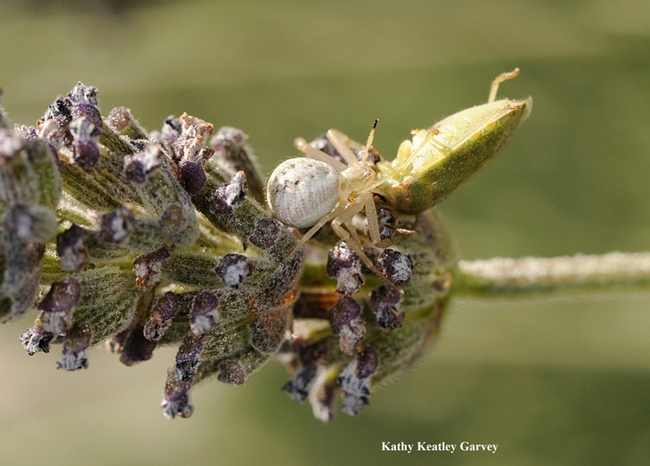
A crab spider dining on a stink bug. (Photo by Kathy Keatley Garvey)
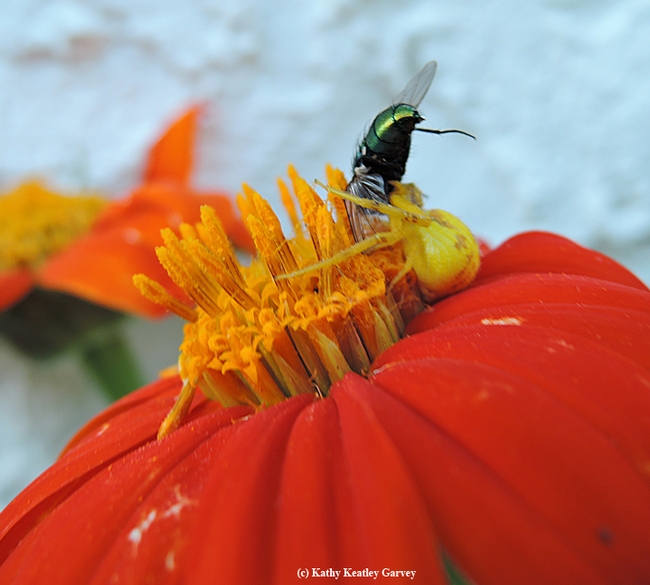
A crab spider has just snared a green bottle fly. (Photo by Kathy Keatley Garvey)
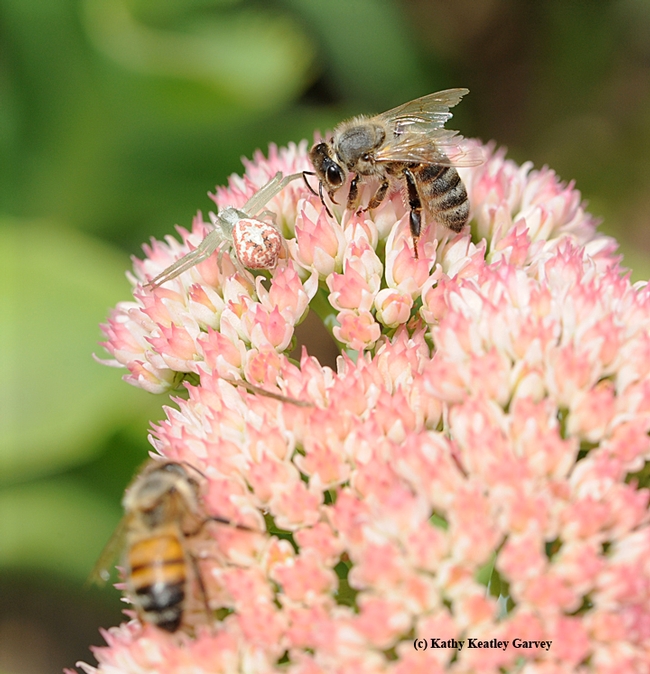
Find the camouflaged crab spider on the sedum. Honey bee, be aware. (Photo by Kathy Keatley Garvey)
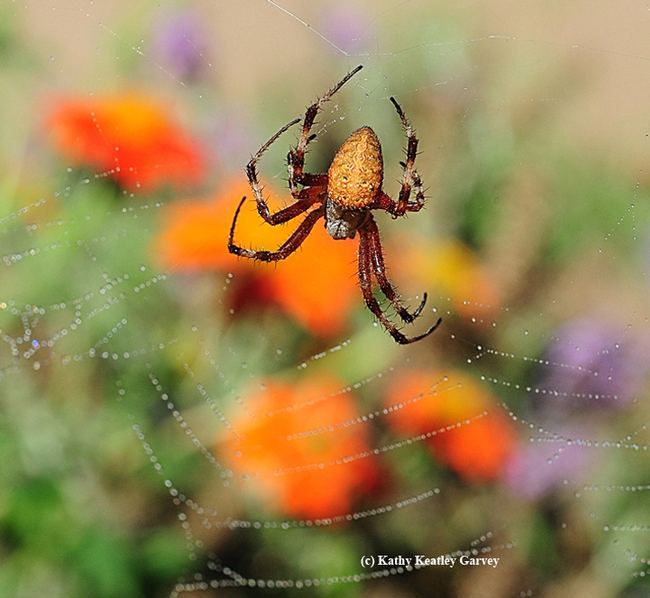
This spider is simply stunning. It's a redfemured spotted orbwever, Neoscona domiciliorum. (Photo by Kathy Keatley Garvey)
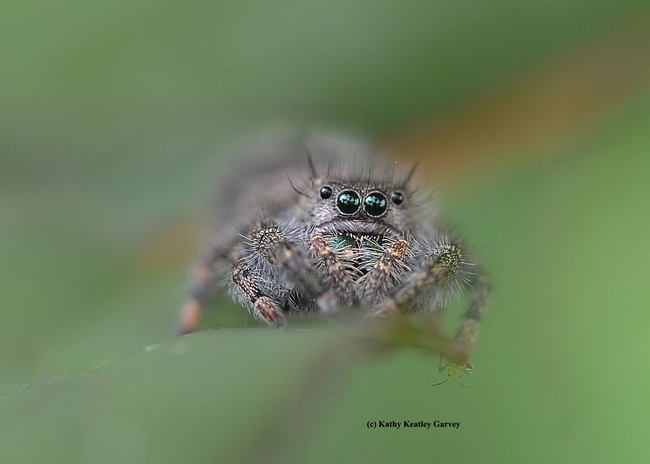
A jumping spider peers at the camera. (Photo by Kathy Keatley Garvey)
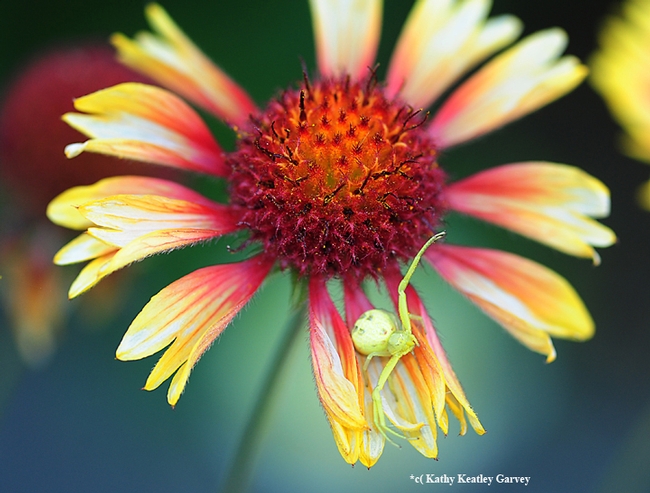
This crab spider, on a blanket flower or Gaillardia, is a camouflaged green. (Photo by Kathy Keatley Garvey)
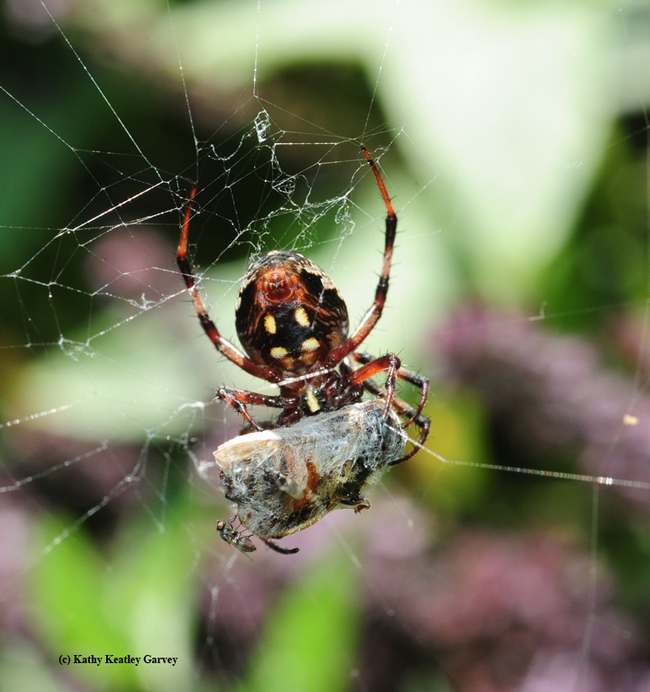
It's a wrap. An orbweaver has wrapped a bee, while a freeloader fly takes a bite. (Photo by Kathy Keatley Garvey)